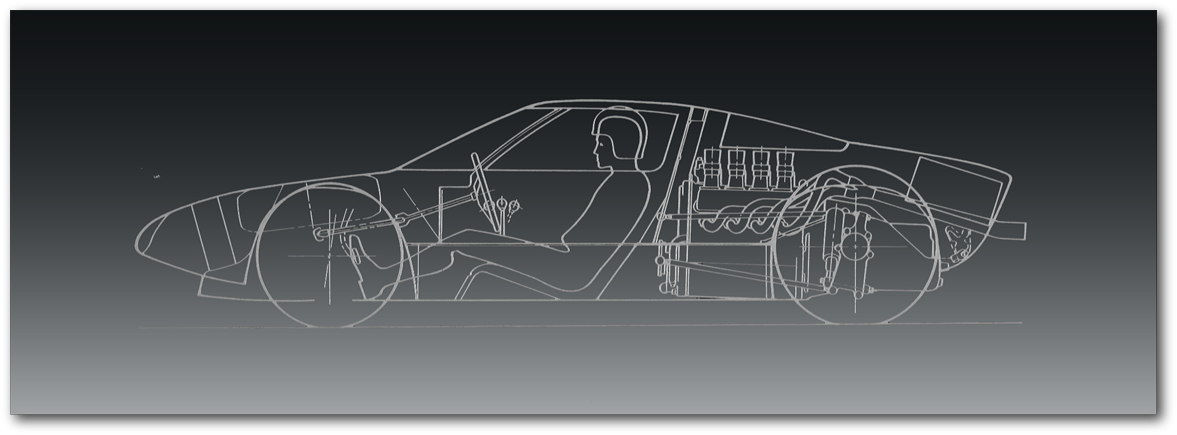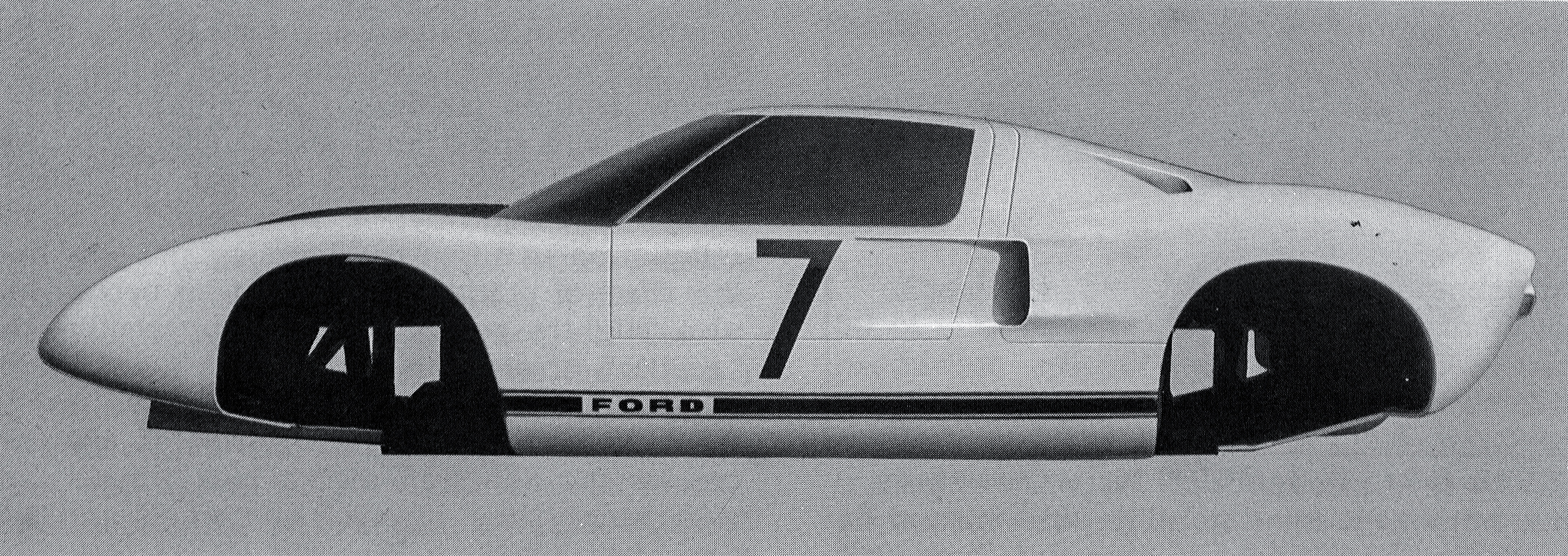


“And moving on to in the middle of page three." Roy continued, referring to the manuscript I sent him, "you start talking about Don Frey being dedicated to a competition operation, for the creation of a Lemans car. That’s fine.
“You mention a whole team of people, Jack, Dave Evans, and so on. Now…that team was being brought together for the total Ford operation. Those guys, are from that time, like Frank Zimmerman, didn’t have anything to do with the GT40.
“That’s great. That’s exactly what I was curious about.” I was quickly making notes as he spoke.
“Dave Evans, I think he was on Sprint cars, or something. Jack Pasnoe was on Stock cars at that time. And…I was the only one on the GT40, with Shelby.
“Carroll Shelby was brought in as the race chief operator. He both had the experience of driving the race winning Aston Martin at Lemans, and he was obviously educated to the program. I was brought in because I had also designed cars for LeMans back in forty-nine, the Aston Martin, and later on the one and a half liter Jowetts, which dominated the one and a half liter class for several years against the Porsches. So we were the two main ones in the equation to get it going.
“Now. Going back to…the mandate. The mandate was to beat Ferrari as you say. But to do it with our own Total Ford effort, with Eric Broadley and company. So…um…let’s see, yeah, we did look at Cooper, and Chapman. Eric Broadley was a natural because one, he wasn’t difficult to deal with…he had the sort of car we wanted, as a prototype.
“We only used that…he had two prototypes, we only ever used one of them, as a running development platform.
“The drawings of the Ford GT package, all the full sized models for making the body skin from, came from the States.
“We were operating out of the Slough facility. And using the Lola GT, as the workhorse prototype, for the hardware.
“So when you say you brought over the Ford package, are you saying that the design and manufacture was done at Dearborn, and the bits were brought over?
“Or the design was brought over and the bits were made in England?”
“The package, the layout, the principles of the body structure and everything, were basically done in Detroit, before we even met Eric.”
”Really?” This was the heart of my thesis, dispelling the myth of the Lola GT being the progenitor of the GT40.
“Yeah. And we brought that all over, and said OK your car is a similar type car and we want to use those principles, but here are the differences. There were a lot of things in his car, which we at Ford motor company could not use. For instance, such as the gas tanks. All he did was put gas in the steel compartments in the frame, without any other means of protection. In other words, if you were to poke a hole in the side of the frame member, all the gas poured out… we insisted that what we wanted to do was put bags in there, plastic bags, that had a protection in themselves, were compliant, you could still puncture the outside, without puncturing the bag. And that sort of thing.
“The other big difference, his car was a combination of steel, for the bottom section, and aluminum for the top. As you already know, trying to go from a steel structure to an aluminum is not an easy thing to do. And I insisted that we go steel monocoque all the way. And even the roof was steel.
“So they were typical of the type of differences we used.
“But, yeah, he helped us tremendously with suspension types, materials you could buy over there that we couldn’t buy over here, like articulated joints and so on.
“So, yes, he contributed a great deal. But it wasn’t his car that finely emerged. It was the Ford GT.”
“That’s brilliant. Thank you for that insight.
"So the drawings then were done by you at Advanced Vehicles, right?”
“The main package layout. Then Eric took them over and put in the details with the suspension and so on.
“Now, Phil Remington, he was the important link, with Shelby racing. He was the mechanic chief engineer. A wonderful guy. He brought a lot to the party.
“We got him over to work in England for a few months. And he stayed off and on with the program right through to the Mark II.







Design sketch
Design model of Mark I






